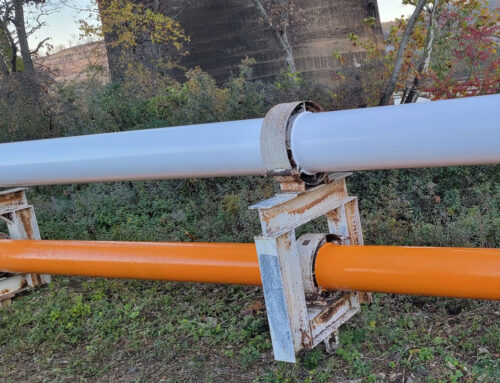Is Mega Rule Compliance Enough?
Mega Rule compliance began in July 2020; companies have until 2034 to fully comply. For many companies, it will be an intensive, often cost-prohibitive, and ongoing process until the final month of the deadline.
As industrial businesses cross the finish line and meet compliance standards, the question remains: will Mega Rule compliance be enough to keep them up and running? Read on to learn more.
Are Coating Repairs Going to Happen Fast Enough?
In the third part of Mega Rule, pipeline operators need to locate and immediately repair construction-related coating damage. After a natural disaster, operators similarly need to repair any type of pipeline damage within 72 hours.
Acute weather damage can be significant. Imagine a pipeline corroded or burst during the summer 2023 flash floods. A 72-hour delay would mean oil or natural gas mixing with flood water, aquifers, and nearby streams. The cost for cleanup and associated fines would far outweigh the cost of repairing the pipeline.
Will Cathodic Protection Protocols Be Thorough Enough?
In the second part of Mega Rule, pipeline operators will need to survey pipelines every five feet and perform repairs within a calendar year. While we won’t dispute that inspections every five feet will reveal most external corrosion issues, the lag time in repairs until the end of the calendar year could become problematic.
Depending on how seriously damaged the corroded section of pipeline is, it would make more sense to require the repair immediately.
How Will Technological Advancements Impact Digital Mapping, Incident Reporting, and Incident Monitoring?
Think of how Geographic Information Systems (GIS) has evolved in the past twenty years. It shifted from being exclusively available to industry stakeholders to being readily available in real-time to anyone willing to purchase it.
Internet-based digital mapping is ever-changing, becoming updated with new information as companies provide data about Moderate Consequence Areas (MCAs), High Consequence Areas (HCAs), and their pipeline’s Maximum Allowable Operating Pressure (MAOP).
With the improvements in GIS technology, incident mapping is changing dramatically as well. It allows companies to get granular with data, including time, severity, parties involved, locations, and incident details.
It took the Mega Rule from 2010, the beginning of the smartphone era, to the 2020s to be drafted. As this technology improves, it stands to reason that the goal post for incident mapping and reporting compliance standards could move.
As the Mileage of Pipelines Embeds and Flows, Can Operators Keep Up with Verification Standards?
Market forces dictate whether or not companies are going to produce more oil or natural gas and, with it, install more pipelines. It’s nearly impossible to predict. Pipelines get shut down and removed during energy market downturns.
When the prices start to soar, industrial companies start digging in order to increase their pipeline presence. As the pipeline mileage morphs, it will be difficult to maintain accurate pipeline records.
Go Beyond Mega Rule Compliance. Hire Eagle Eye Services Today.
The team at Eagle Eye Services specializes in helping industrial businesses reach and exceed Mega Rule compliance. Don’t wait until the last minute to start inspecting and making repairs. Schedule your free consultation today.
More advice from the experts:
Ready to Get Started?
Have questions about your project or need a quote? We’ve got someone ready to help you.



